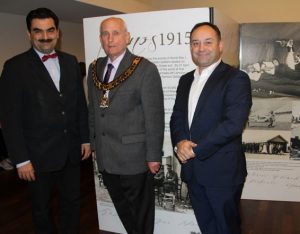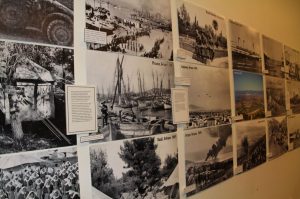
The Greek Island of Lemnos played a pivotal role for Anzacs on their way to Gallipoli and – if they survived that nine month campaign – returning home or to other parts of the World War I front.
But as Campbelltown Mayor Paul Hawker said at the official launch last night of the Life on Lemnos photographic exhibition, the north Aegean island was a lot more than that for our troops.
“It was at Lemnos where the largest armada in history had gathered a few days before leaving on April 24, 1915 headed for Gallipoli,’’ Mayor Hawker said.
“There were more than 200 ships and it was at that time the biggest armada ever assembled, and it was in Lemnos.’’
But from an Anzac point of view, the island was also the first Greek place our soldiers had set foot on in World War I.
More than 3,000 of them arrived in Lemnos early in March of 1915 as preparations got under way for the assault on the Turks in Gallipoli.
By the end of the campaign more than 50,000 Anzacs had landed on Lemnos, and their interaction with the local people is captured in this poignant black and white photographic exhibition.

Lemnos was also the site of both the No. 3 Australian General Hospital and No. 2 Australian Stationary Hospital, and the exhibition includes photographs of nurses with Anzac soldiers.
Campbelltown Council, in partnership with the Consulate General of Greece, and the support of the Joint Committee for the Battle of Crete and the Greek Campaign, along with Lemnos 1915 and Macarthur Greeks Inc is hosting this historically important photographic exhibition.
It’s an exhibition that will help us understand a little more about what the Anzacs went through at that time.
It also captures the bond between the locals and the Diggers, a bond that lives on between Greeks and Australians to this day.
SNAPSHOT:
WHAT: Life on Lemnos Exhibition
WHERE: Greg Percival Library, Oxford Road, Ingleburn
WHEN: June 18-28
